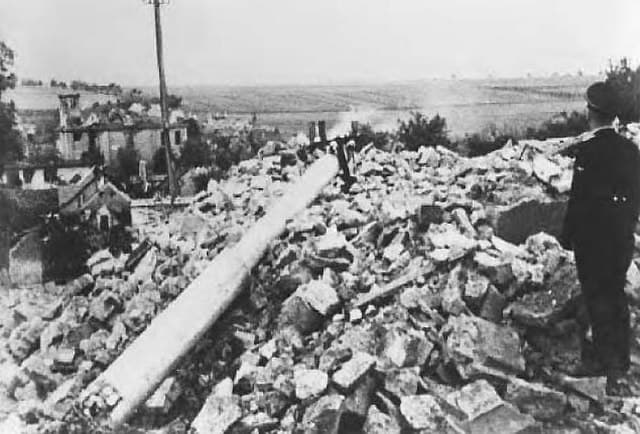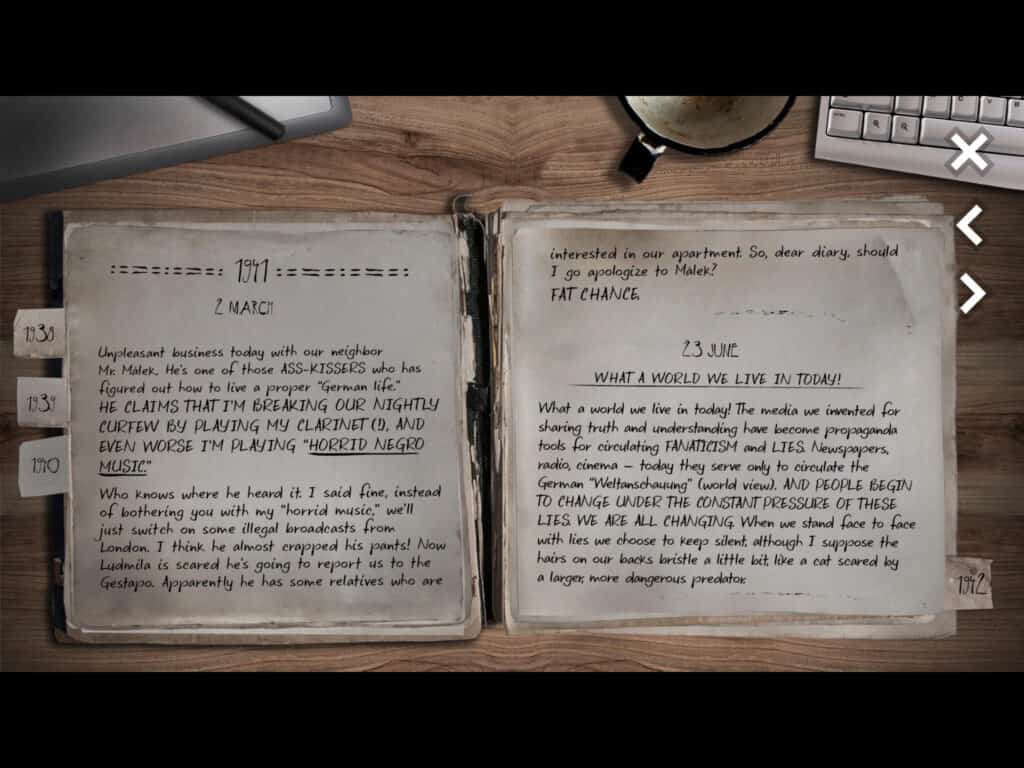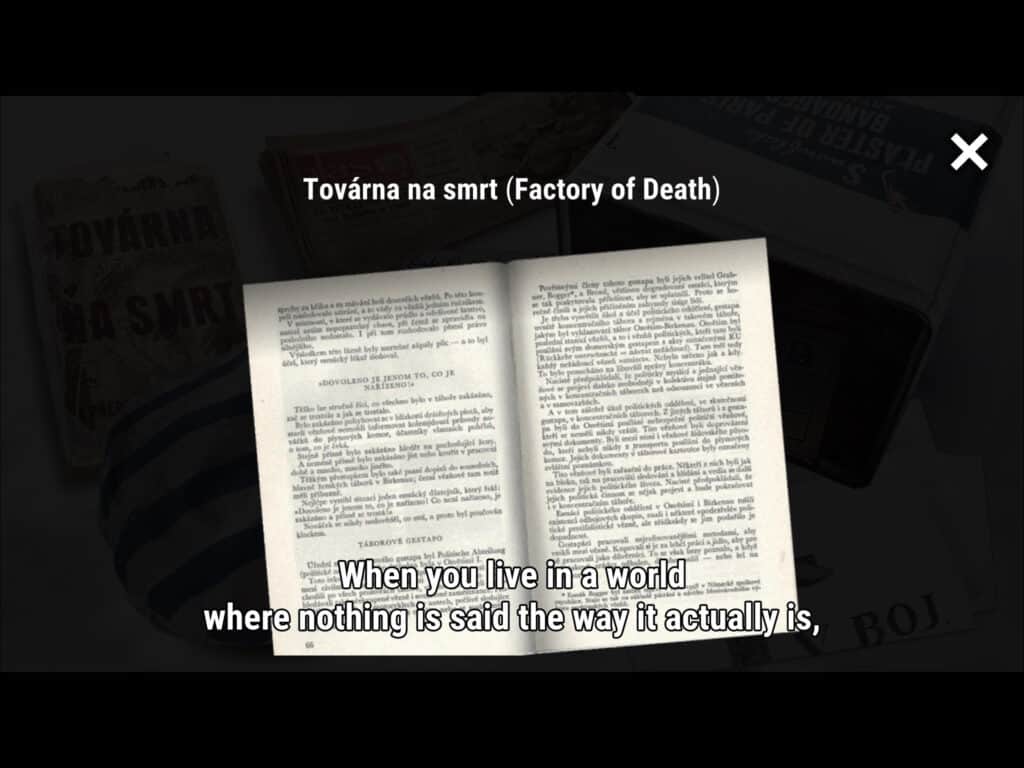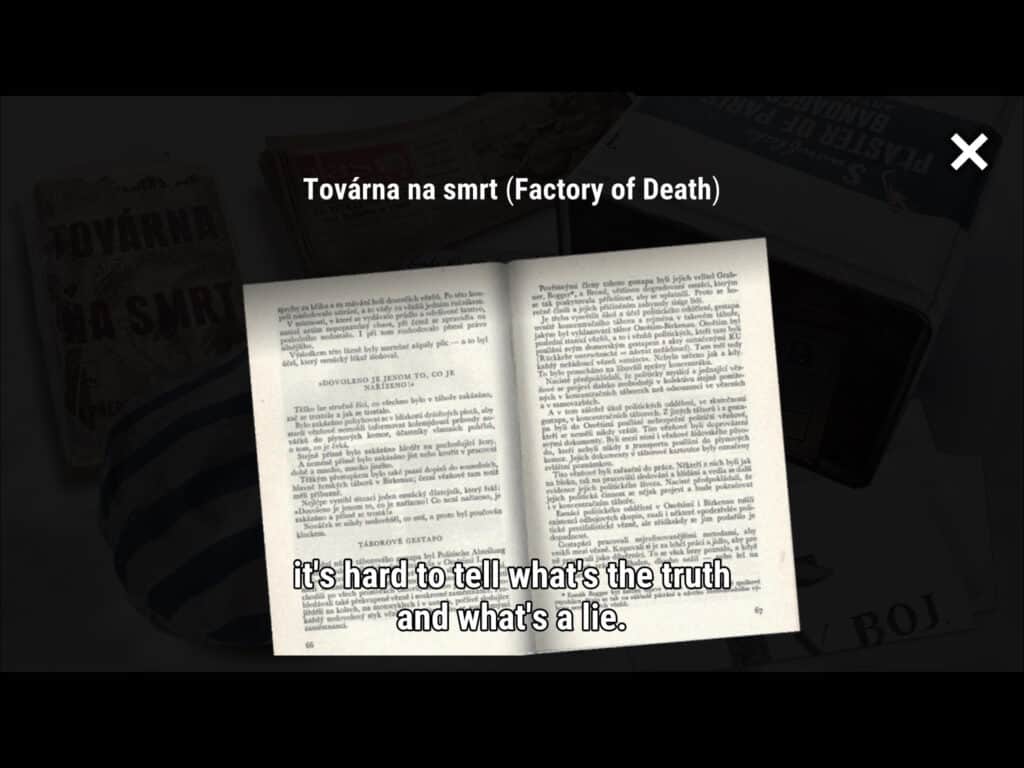David Seelow, PhD©
A Game, History and The Holocaust: Invaluable Lessons from the Czech Republic
My junior semester abroad ended with an extraordinary group trip to Vienna, Austria. We had been studying the European Union at the famous College d’Europe in Bruges, Belgium. Consequently, what better way to end the semester than the site of the Congress of Vienna. Modern Europe owes much to this historical event. A rather motely group overindulged in wine we had the privilege of meeting various European diplomats and politicians at the legendary Hofburg Palace. Nothing at our home campuses could compare to such an experience.
Once the week ended, we went our various ways, some back to Brussels and on home others to dreamed of destinations across the continent. I had a strong spontaneous inclination those days and a taste for the offbeat, so I applied for a ten day visa and took the train across the border into Czechoslovakia. In my oversized backpack, I had two dangerous texts. One, Victor Marchetti’s The CIA and the Cult of Intelligence, appealing to communists with their anti-American stance. The other, Aleksandr Solzhenitsyn’s The Gulag Archipelago, contra ban that side of the border, and treasured in the U.S. with its staunchly anti-communist expose.
I learned more in those ten days than I ever could reading a history book. Part of what I learned was how important Czechoslovakia, now the Czech Republic, has been in modern history, which brings me to a fabulous game about Czech history and the Holocaust designed by students at Charles University. Attendat 1942 is a historical documentary style game that mixes archival footage, and photos, interactive comics and live action interviews with actors playing people from a critical moment in Czech and European history. That moment is the assassination of Nazi Reinhard Heydrich, leader of the German Protectorate of Bohemia and Moravia.
In the game you play the grandson of Jindrich Jelίnek who was arrested by the Gestapo. In his role you learn about family history and effective way to humanizes the Nazi occupation. By humanize, I mean dramatize historical events in a concrete and personal fashion to generate empathy in the player. For example, interviewing your grandmother about your granddad reminded me of Art Spiegelman’s Maus (1986-1991)and Art interviewing his father Vladek about Vladek’s life in Poland and then, his being sent to the concentration camps. It is moving and personal story that tells a larger history. In Attentat 1942 you are exploring you grandfather’s world as a historian would be investigating the archive of his life: hidden objects are both personal mementos and historical documents. You uncover a cap from Auschwitz, subversive leaflets, and jazz records- a no no for Nazis who associated jazz with American blacks. Thus, the personal merges with the historical, the narrative with the documentary.
Mini games are engaging and enlightening. My favorite was a duel of poems between grandma- Ludmila and a Nazi ‘suitor’ in a restaurant favorited by Nazis. He wants to seduce her, but she distracts or puts him off by reciting poetry in a duel of poems. She survives an abusive situation, and you learn about some great poetry.
The game provides insight into many aspects of the Nazi occupation. The role of the resistance fighters. The place of collaborators. The power of the radio, and the subversive nature of listening to BBC broadcasts. The in-game encyclopedia, which can be opened by clicking any new term, person, or place, gives extensive information about all dimensions of the game’s work equivalent to an history textbook, but on demand and in the context of the narrative.
As a collaboration between Charles University and the Czech Academy of Sciences, the game has a foundation in professionally researched history. A personal story weaves through archival documents and develops as you interview Czech citizens- played by fine actors, examine documents, and engage with interactive comics. In an interview with Gamasutra (Couture, 2018), one of the team’s members speaks about the how the game’s interactive dimensions enhance the player’s grasp of history:
History is oftentimes perceived as a list of important dates and events. Through the interactive interviews in Attentat 1942, we connect these overarching narratives with concrete people’s lives. The interactivity of the game – the fact that players have to make decisions that matter – immerses players more deeply into the story. The interactive graphic novel segments help players imagine the atmosphere of the times the eyewitnesses are talking about. Overall, the game enhances the understanding of the complex and multifaceted decisions these people make.
As mentioned above, everything revolves around the assassination of the Nazi leader Reinhard Heydrich and the Nazi’s retaliation for the assassination (he died in the hospital days after the shooting from complications from his injuries). The game’s prelude, video footage of the historical situation on May 27, 1942, presents a rich opening for class discussion to frame a class unit. Is a state sponsored assassination ever legitimate? What better test case then Heydrich who oversaw, “The Final Solution,” i.e., the extermination of all Jews.
As an essential question, a unit on the Holocaust could begin with such a question: Should “Operation Anthropoid,” the name of the state sponsored planned assassination of Heydrich, have been followed? Have students take the role of one of the two resistance fighters who carried out the plan, Josef Gabčίk (a Slovak) and Jan Kubiš, a Czech, and write out a dramatic monologue about their decision to paratroop into Prague. Follow up, after the unit and ask students to imagine what Czechoslovakia would have been like during W.W. II if Heydrich had not been assassinated. How does one event alter the course of history? What if Reverend King had never been assassinated? It is speculation, but a thought experiment of gravity and consequence for promoting deep historical understanding.
Nazi reprisals for the attempted assassination were horrific, and nothing showed the extreme brutality and inhumanity of Hitler than the brutal destruction of the entire city of Lidice on June 9, 1942. That Czech city was razed. All men who were captured or tracked down were executed by firing squad. Women and children were deported to concentration camps. A few children were placed with SS officers; 82 children were gassed to death at the Chelmno extermination camp in Poland. This murder factory was the prototype for later, better known extermination camps. You have in these historical scenes the nucleus of essential discussions about the Holocaust, Nazi policy, resistance movements, evil, World War II. In this local Czech history, you also have World History at one of its most intense and life changing moments.

This brings me back to my personal journey as a young student. Czechoslovakia survived the Nazi occupation, but at great cost. The war’s end simply brought the country into the Soviet orbit as part of the Eastern Bloc of communist dictatorships under the oppressive rule of Joseph Stalin. No freedom to speak of. In 1968, a cataclysmic year of upheaval across Europe and the United States, Czechoslovakia flirted with democracy of sorts under the socialist leader Alexander Dubcěk beginning January 5th. Dubcěk practiced “socialism with a human face” and lessened censorship of media, travel, and other communist restrictions. His challenge to autocracy did not go well or last long as Soviet tanks rolled into Prague on August 25th,1968 literally putting down their foot on the Czech people. When I walked around Prague that spring of 1975 only 7 years after the Soviet invasion, I learned more than anything else that the average Czech citizen loved Americans- not openly, but they expressed such to me, and they hated the Soviets, again, not openly, but deeply. They sought the everyday freedom we take, but should not take, for granted.
The Past in the Present: The Synchronicity of History
Recall, 1968 also saw much upheaval in the United States, with the assassination of two dynamic national leaders, one black, one white, who supported peace and integration. April 4th1968, Reverend Martin Luther King, Jr, was assassinated and a few months later, on June 6, Robert F. Kennedy was assassinated. Over 100 race riots broke out in U.S. cities and even the Democratic National Convention in Chicago (August 26-29) witnessed rampant violence and social chaos. The result brought about the election of Richard M. Nixon and his many destructive policies and practices. In this kind of social upheaval, extremist leaders emerge. At the time, America witnessed the rise of Alabama Governor George Wallace who ran as a third party candidate. Wallace openly opposed integration, supported Jim Crow laws, and represented a form of white nationalism that prefigured the emergence of Donald J. Trump nearly half a century later.
Attendat 1942 makes possible important parallels between the rise of totalitarian in the 1930s and 1940s and more current challenges to democracy. Two examples will bear much fruit in the classroom. First, the grandfather Jelίnek’s diary. In the point and click exploration of the room this diary turns up. In the 2 March entry reproduced below the grandfather comments on his neighbor Joseph Málek. Málek is one of the figures you interview in the game. He is suspected to be a collaborator. In the cited passage we learn of Málek’s distaste for jazz- a dislike shared by many Nazis. We also read about the distortion of truth and the use of media to brainwash the Czechs into accepting the Nazi version of reality. This misuse or manipulation of the media prefigures the Trump assent to power, when the candidate Trump used Twitter, his celebrity status, Fox News, and other outlets to serve as his political support, and later, help persuade his followers that lies were truth.

I wrote about the national danger of “The Big Lie” in my previous post, but here let me point to a final example from Attentat 1942 that foreshadows today’s dangerous public discourse. One of the most powerful primary documents unearthed during game play is the Czech text Továrna na Smrt (“Factory of Death”). The bold text set off from a reproduction of the primary document speaks tellingly about how a public lie contaminates the entirety of public discourse turning the world, for many people, upside down.


Composed by fellow Czech prisoners, Kulka and Kraus,The Továrna na Smrt (1946) perhaps represents the most powerful account of Auschwitz that we have. As the final survivors of the camps pass away this kind of primary document becomes more vital than ever as testimony to the horror of the Holocaust. I would argue such texts are imperative for all courses on W.W. II, Modern European History, World History, and the Holocaust. Eric Kulka survived 5 different concentration camps and his ghostly presence lingers over this powerful game. The story told by Holocaust survivors cannot be forgotten.
Parallels between the 1930s and 1940s should not be underestimated. Democracies have been undermined and as social conditions and media make space for extremist perspectives, and even normalize extremists, then democracy in our country is in peril. Attentat 1942 provides many lessons for today’s gamer and students. Lessons on the rise of authoritarianism, the destruction of freedoms, foreign occupation, the tension between resistance and collaboration, the horror of the Holocaust, the danger of media manipulation, and the scapegoating of minorities. In this instance, playing a game is playing darkest history so that it will not repeat itself, even in variation.
Note
1. As identified in my last blog, Steven Levitsky & Daniel Ziblatt’s book How Democracies Die (Crown Publishing Group 2018) provides a concise and compelling history of modern autocracies in mid-twentieth century Europe and contemporary South America. The Harvard professors show how former president Trump meets all four of their criteria for authoritarian behavior (Table 1, pp. 23-24) and explain how the failure of the Republican Party to serve as gatekeeper preventing his rise to power has created conditions that seriously undermine our democracy, even imperil it (pp. 53-71). The book was published before the 2020 election, but Trump’s defeat has not dissipated. In fact, the threat to democracy has intensified through voter suppression laws with their thinly veiled racism, and extreme measures taken by some Republican controlled state legislatures and Republican governors. In terms of the two key aspects of American democracy: mutual respect and forbearance, as of now, mutual respect does not exist. The two parties are polarized in the extreme and see each other as enemies not as holding different perspectives on a mutual mission to support and sustain democracy. The country seems more divided than any time since the Civil War. Likewise, forbearance continues to be largely inoperative following Trump’s defeat. Institutions are weaponized and President Biden’s attempts to reach across party lines for bipartisan agreement have largely failed. Extremist points of view like those of Congresswoman Marjorie Taylor Greene go unchecked. Unless there is a shift toward at least some bipartisanship and common ground the darkest of the authors’ three scenarios may well take hold (see “Saving Democracy” pp. 204-231). Consequently, any game that gives a historical context to the reality of authoritarianism deserves to be played and discussed with students.
Lesson Ideas
The design and research team in Czechoslovakia has an entire Teacher’s Guide listed under resources that I highly recommend. Two areas worthy of student investigation have pressing relevance to our current situation.
“News, Propaganda, Technology, and Dissent”
In a dictatorship like Czechoslovakia during the Nazi protectorate and then under the Soviet Union news always comes under government control and; consequently, can neither accurately serve the country’s citizens nor provide honest information to outsiders. Censorship always limits what gets reported. Nonetheless, people find always to get accurate news spread among themselves and to the outside world. For example, even me bringing in a banned novel by a Soviet dissident in 1975 served to give an alternative perspective on the country’s official news or propaganda. During the Nazi occupation, Czech citizens could pass information among themselves through the leaflets Jelίnk receives, in the game, from a friend. Additionally, British Broadcasting Company (BBC) news could get through to the people via radio. These forms of underground communication are vital to resisting authoritarianism.
Today, in a democracy there is a wide variety of information available, but much of that information is propaganda that masquerades as news. Additionally, social media forms that could serve as alternatives to mainstream broadcasting often exist with no fact checking, and no gatekeeping, hence their accuracy and authority must always be in doubt. How does one provide and obtain accurate information in modern democracy? The misinformation spread by President Trump through Twitter, and, at times, Fox News, has parallels throughout the entire Vietnam War period where the U.S. government consistently lied to the public about the war. The publication of the famous Pentagon Papers in 1971 leaked by Dr. Daniel Ellsberg provides a historical case in point.
Break students into teams and ask them to research the situation surrounding the Pentagon Papers. Have another group research underground or alternative publications in the U.S. like Ramparts magazine from Berkley California or The Village Voice from Greenwich Village in New York City. Students can report on their research and compare the mainstream version of news with alternative and underground perspectives.
Editorial
One of the important challenges during the game concerns your grandfather’s neighbor Joseph Málek. Málek was a journalist, and your grandparents suspected him of being a collaborator, which in your interview with him he refutes. In the game narrative Málek is tasked with writing an editorial that supports the Nazi Protectorate. If he is a collaborator that does not present a problem, but if he opposes the Nazis and wants to keep his job, and perhaps, his life, he must write a more neutral editorial- perhaps one that subtly undermines the occupying regime. In an interactive activity you must fit together pre-written paragraphs that satisfies the Nazi overseers and maintain your safely but does not betray your homeland. Put students in a similar historical situation and ask them to write an original editorial about the situation in Prague or maybe about the destruction of Lidice. You can follow up by asking students to write an editorial for a U.S. paper and then discuss the differences in writing editorials under both forms of government as a class.
Samizdat: Underground Information
During W.W.II and since underground information in communist Soviet bloc countries was referred to as Samizdat. Many of these publications were makeshift and spread by hand, which you encounter during the game. Students can research some of this work in archives, but also compare the use of these print based dissident publications with the use of Twitter to spread censored information in contemporary dictatorships, such as Twitter use during the Arab uprisings, e.g., the fall of Egypt’s Hosni Mubarak in February 2011. This could be tied into the game specifically through Operation Prospero (1951-1956) in the aftermath of W.W. II when Allied Forces dropped leaflets and information over Soviet controlled Czechoslovakia through balloons (Lasar, 2010). A group of students could also identify sources of underground information in current dictatorships like Venezuela.
You could even ask students a discussion question like is WikiLeaks a form of Samizdat in the West?
Radio
Today’s students have a very limited experience of radio as a medium, but in the pre-digital world radio’s value both as entertainment and news cannot be overestimated. The game makes clear the subversive role the London based BBC played in getting accurate information to Czech citizens. Radio Free Europe, sponsor of the above mentioned Operation Prospero, also played a critical role during the war years and their aftermath. In class, have students listen to archived broadcasts during W.W. II and then discuss the importance of radio in fighting historical doctorships.
Student Creativity
In groups have students create a simulated dissident campaign using what they consider to be current forms of information about a dictatorship under duress from popular opposition. Also have students create their own radio broadcast and play the broadcast during class regarding news that would be difficult for citizens in a dictatorship to obtain.
Resources
Teaching Guides
Attentat 1942 Teacher’s Guide– by Shawn Glybor, November 15, 2019.
This excellent teacher’s guide comes with an educational license to the game. It is the first place to begin your unit and lesson planning.
PBS Learning Media–https://ny.pbslearningmedia.org/collection/teaching-the-holocaust/
Public Broadcasting Service’s lessons on teaching the Holocaust, especially through art.
The Anti-Defamation League– https://www.adl.org/sites/default/files/documents/assets/pdf/education-outreach/guidelines-for-teaching-about-the-holocaust.pdf
Dedicated to fighting anti-Semitism and all forms of hate speech and action the ADL publishes, “Guidelines for Teaching About the Holocaust,” which should be a preliminary step in preparing lessons for any teacher.
Museums/Websites/Organizations
Reporters San Frontίere (RSP)- https://rsf.org/. The best guide to international reporting on freedom. You can view translations on the site.
AUSCHWITZ-BIRKENAU A MEMORIAL AND MUSEUM– http://auschwitz.org/en/
The museum in based in city of Oświęcim, Poland and tours begin at the actual historical site of Auschwitz. Obviously, nothing could be as powerful, and overwhelming as visiting the actual site and museum but the online history and exhibits are also an indispensable educational resource.
Gaming the Past:historical video games in the classroom and beyond- https://gamingthepast.net/
An excellent, comprehensive site devoted to games and history. It covers video games, tabletop games, simulations and more. The site is the product of high school history teacher Jeremiah McCall (see his book below). These is a specific discussion of Attentat 1942 athttps://gamingthepast.net/2017/11/24/attentat-1942-review/
Radio Free Europe/Radio Liberty– https://www.rferl.org
Tracks human rights and freedom of the press in countries that practice censorship. As of today, twenty three countries are followed.
United States Holocaust Memorial Museum–https://www.ushmm.org
Based in Washington D.C. this museum demands a personal visit if you are ever in the U.S. capital. The online site has a section called “Teach” that provides guidelines, tools, poster sets, research, and other critical information about the Holocaust, how to teach, why to teach, and how to handle Holocaust deniers.
Books/Essays
“The Power of the Powerless”- Václav Havel
Václav Havel’s essay, written in 1978, describes conditions of living under Soviet domination. Havel was the first president of the Czech Republic following the dissolution of the Soviet empire and his essays are a must read for understanding Eastern Europe since the end of W.W. II. Free version of the essay is available online.
The Captive Mind by Czeslaw Milosz. Vintage Classics, reissue. 1990. Translated by Susan Mitchell. Composed in 1953 the Polish Nobel Prize winning poet’s prose masterpiece gives an imaginative and powerful account of dictatorships, the power of brainwashing, and the psychology of collaboration. I studied with one of Milosz’s contemporaries, the Polish drama critic Jan Kott, and The Captive Mind brilliantly captures the appeal of authoritarianism while also describing the exchange of Nazi domination of Eastern Europe for Soviet domination under Stalin. I can think of no better book for our students to read in these polarized times.
The Death Factory/ Tovarna na Smrt– Erick Kulka and Ota Kraus, Translated by Stephen Jolly. Pergamon Press, 1966, originally published in Czech by Praha Cĭn, 1946.
A powerful primary document; eyewitness account of life in Auschwitz.
Gaming the Past: Using Video Games to Teach Secondary History by Jeremiah McCall (Routledge, 2011).
How Democracies Die by Steven Levitzky and Daniel Ziblatt (Crown Publishing Group, 2018).
An excellent book on the collapse of democracy in modern times with a warning about the threat to American democracy posed by the rise of right wing extremism surfacing under former President Trump.
There is “A Reader’s Guide to Levitzky and Ziblatt’s How Democracies Die,” printed at the back of the book, (Penguin Random House LLC, 2019). Additionally, online can be found “How Democracies Die Teacher’s Guide,” (Penguin Random House), https://www.penguinrandomhouse.com/books/562246/how-democracies-die-by-steven-levitsky-and-daniel-ziblatt/9781524762940/teachers-guide/. This guide incudes classroom exercises, discussion questions, resources etc.
Works Cited
Couture, Joel. “Road to the IGF: Czech Academy of Sciences’ Attentat 1942,” interview with Vit Sisler, Gamasutra, February 21, 2018, https://www.gamasutra.com/view/news/314616/Road_to_the_IGF_Czech_Academy_of_Sciences_Attentat_1942.php.
Lasar, Matthew. “Inciting revolts before Twitter: balloon info battles of the cold war,” ars technica, June 8, 2011. Web, retrieved from: https://arstechnica.com/tech-policy/2011/06/operation-prospero-the-cold-wars-battle-of-balloons/
